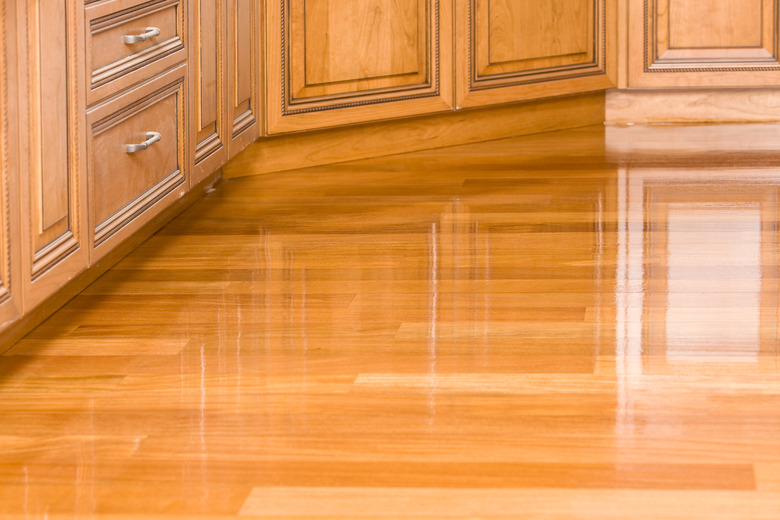Types Of Polyurethane Finishes
Shellac, varnish, and lacquer finishes have been around for a long time. They serve special purposes and are still used, but for most applications today, they're nudged aside by polyurethane. Used on furniture, woodwork, and floors, polyurethane is basically liquid plastic when applied, drying into different degrees of durability depending on the type of base chosen: water or oil. In addition to choosing the base type for your project, you'll need to decide which finish you want, and that involves considerations of aesthetics and maintenance.
Four Types of Polyurethane Finishes
Four Types of Polyurethane Finishes
Polyurethane finish is available in four sheen levels: matte, satin, semigloss, and high gloss. The sheen is determined by measuring the extent to which the finished surface reflects light.
Matte finish is, of course, flat and therefore the least reflective. It's often chosen because its lower luster helps to hide scratches and blemishes. Satin finish is the most frequently chosen sheen because it offers enough shine to please those who find the flatness of matte unappealing but not so much that it calls attention to marks and damage. Satin polyurethane finish is easy to maintain.
Semigloss is more lustrous than satin. Its sheen serves to more effectively reveal the beauty of the wood, but because scuffs and scratches become more easily visible, you'll spend more time maintaining the finish to keep it looking good. If used for flooring, it's best for areas with little traffic.
High-gloss polyurethane finish is eye-catching, but because it's the most light-reflective, it reveals every little scratch, scuff, and ding. For this reason, it's uncommon to see this finish on floors. If used for floors at all, it's best reserved for low-traffic areas.
About the Base
About the Base
There are two basic types of base used in polyurethane finishes: water and oil. The base does not determine the sheen level, but it can affect the color. While water-based polyurethane doesn't create color issues, after a few years, oil-based products can begin to turn yellow. Darker woods may not show the yellowing, and some woods may be enhanced by the warming effect, but the look of lighter-colored woods can eventually be ruined by oil-based polyurethane.
The durability of the finish is also determined by the base chosen. An oil-based polyurethane finish is more durable than a water-based product as a result of how it cures within the wood and is a good choice for floors and for kitchens, dining rooms, and work tables. Water-based polyurethane carries less odor and toxicity, but you'll have to apply more coats. It's also more easily affected by heat and certain chemicals, which makes it a poor choice for floors and furniture that see heavy use.
A third type of base now available is water-based, oil-modified polyurethane. It dries to a durable, amber-colored finish, but it cleans up with water and has the lower toxicity of a water-based polyurethane.
You Can Change the Finish
You Can Change the Finish
If you're unhappy with the way your floor or furniture looks — if it's dull, overly shiny, or simply showing age — you can make a change. It's important to note that if the finish is less than six months old, you'll have to stick with the same base. If the existing finish is a water-based polyurethane, for example, you can't apply an oil-based product and vice versa. Finishes that are older than six months can, however, take a change of base type.
